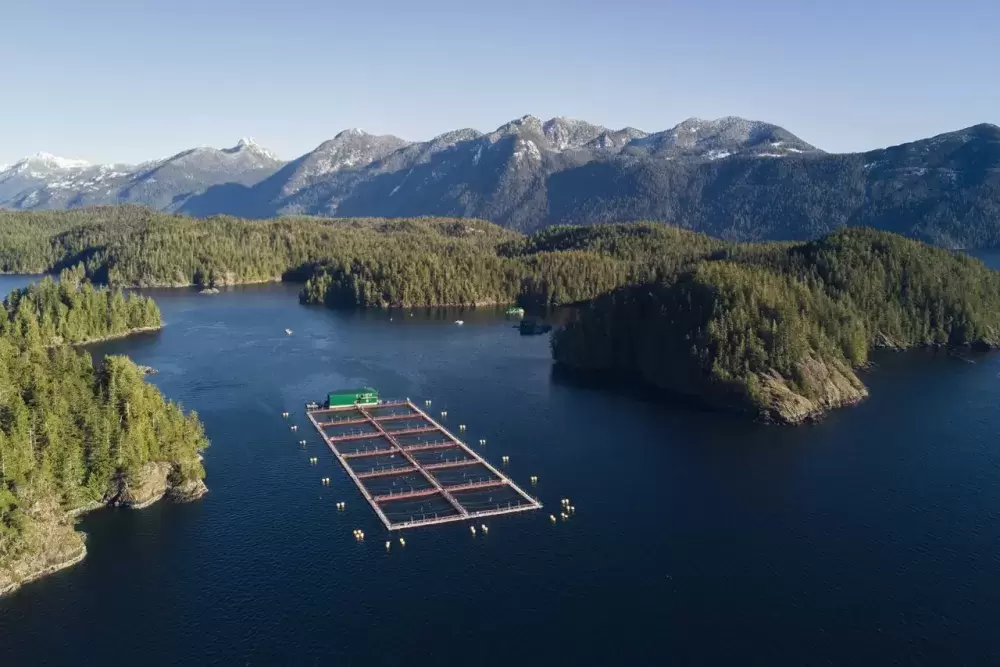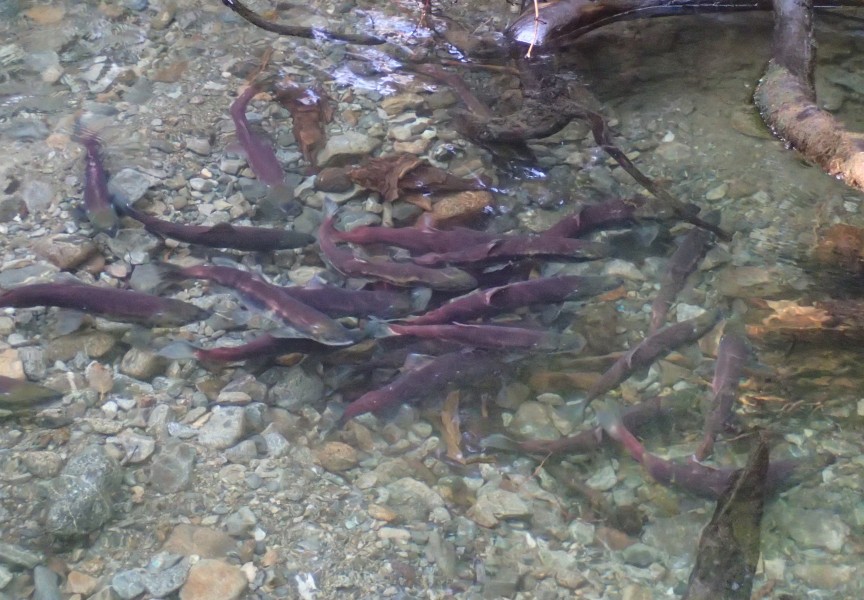Clayoquot Sound’s largest Aquaculture operator has closed one of its fish farm sites for at least a year, citing high levels of sea lice.
A rise in the parasites that feed on the skin and mucous of salmon has been an ongoing concern for Cermaq this year, which has seen sea lice volumes at some of its sites rise well above the threshold set by Fisheries and Oceans Canada. The prevalence of the tiny crustaceans at the Fortune Channel farm pen, located northeast of Tofino in Ahousaht Hahoulthee, led the Norway-based company to close the site until late 2019. The site closure has not resulted in any layoffs, as staff working on the Fortune farm have been moved to other pens in Clayoquot Sound or to locations on the east side of Vancouver Island, according to Cermaq.
The farm closure was announced in a letter from Janice Valant, Cermaq’s certification officer, that was sent to members of the Clayoquot Salmon Roundtable, a co-management fisheries group that oversees the region.
“We are doing this in support of fish welfare and effective area-based management of our Southern Region sites,” wrote Valant. “In order to close the site, we will need to remove the small fish that are currently on site. This will be done humanely and quickly over the weekend starting Aug. 31.”
The Cermaq sites are monitored according to a three-lice-per-fish standard set by Fisheries and Oceans Canada, but data collected over the summer indicates salmon in the Fortune Channel pen far exceeded this threshold. The monitoring information that Cermaq voluntarily makes available shows the salmon louse count reaching as high as a mean of 10.77 per fish on July 10, followed by a count of double the DFO standard for treatment in early August.
Further north in Clayoquot Sound Cermaq’s Bedwell site also recorded high levels of sea lice in late July and August, as did the Bare Bluff farm. Cermaq’s West Coast aquaculture sites farm Atlantic salmon in the Pacific waters.
Cermaq stated that the Fortune closure was taken as a “precautionary measure.”
“Although this is an unfortunate development, we believe this is the responsible thing to do to uphold our fish welfare commitments, break the sea lice cycle, protect wild salmon in the area and most importantly operate responsibly in Ahousaht territory and the Clayoquot region,” wrote Valant.
Although sea lice don’t normally kill adult salmon, they can be fatal to juveniles. The parasite was found in wild fish long before the advent of the aquaculture industry, but the higher density of salmon in aquaculture pens allow the lice to breed more easily. This leads some to fear that the parasites are affecting wild salmon that migrate through the same waters as the pen sites.
“Cermaq takes this matter very seriously and is addressing it,” stated David Kiemele, the company’s managing director of Canadian operations, in a press release last May.
At that time Cermaq stopped selling salmon from some of its Clayquot Sound farms after half of the 14 sites in the region showed sea lice increases. The decision to remove fish from several farms was made after discussions with the Aquaculture Stewardship Council, an international body that certifies fish farms based on standards of environmental responsibility. Several of the farm sites in Clayoquot Sound currently carry ASC certification.
“This outbreak is an environmental disaster,” stated the advocacy group Clayoquot Action in a press release last spring. “Without salmon farms, wild salmon would not encounter salmon lice until they are adults, big enough to handle them.”
Clayoquot Action blames the presence of fish farms for contributing to the decline of wild stocks in recent years. But Stewart C. Johnson, who works at Fisheries and Oceans Canada’s Pacific Biological Station in Nanaimo, cautions against making this direct link.
“We really don’t understand what regulates salmon on the high seas,” said the biologist. “The thing that we see is that the longer the fish are in sea water, the more sea lice they have.”
Johnson compared sea lice on salmon to how flees affect a dog; it’s normal to have a few, but an excessive amount can be concerning. He has noticed this among wild salmon, including the huge numbers of lice that affected a migration past Port Alberni in the 1990s.
“They had returning sockeye into Alberni Inlet - there was no farming in that area - and they had massive lesions on their heads,” said Johnson. “Every once in a while, given the right conditions and the right abundance of hosts – especially if fish are forced to reside in an area, like holed in an area in rivers – sea lice can become quite abundant on wild fish.”
In the spring Cermaq treated the sea lice by depopulating some farms while treating others with a hydrogen peroxide bath the company received the licence to use. The recent closure of the Fortune Channel site represents a further measure to control the spread of the parasites.
According to Cermaq, their fish are continually monitored for lice, and the salmon in the Fortune site did not have the parasites when they were moved from a freshwater hatchery to the saltwater pens in Clayoquot Sound. The affected fish were sent to a facility in Parksville to be composted and converted into fertilizer.
Earlier this year Cermaq announced its investment into a $12-million sea lice control barge, custom built in the Netherlands to serve the company’s West Coast sites. The Hydrolicer is designed to use water pressure to remove sea lice from salmon in net pens, with the ability to treat a whole site in two to three days.







